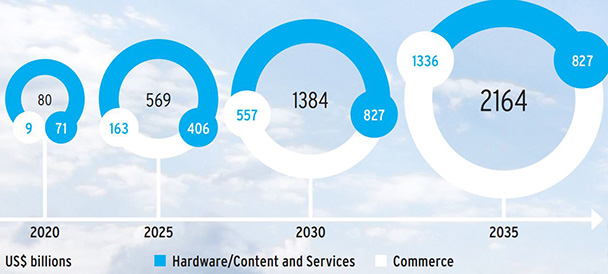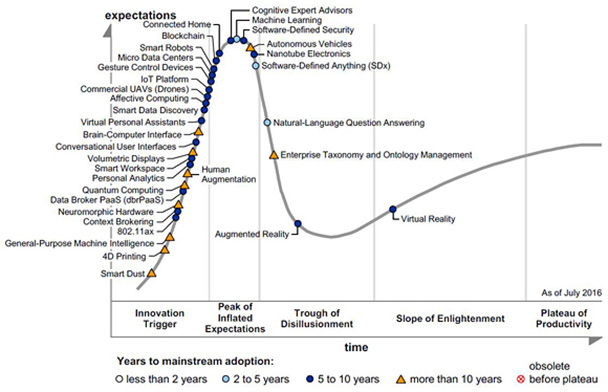As David Kelly, executive vice president and executive director of The eLearning Guild, recently wrote about the potential and risks that enhanced realities hold for learning: “Virtual, augmented, and mixed reality applications are poised to explode into the consumer market. That explosion will bring with it the mainstreaming of this technology that transforms how we look at content, opening new opportunities not only for how we entertain ourselves but also for how we connect, share, and learn.”
Our newest white paper contains a “knowledge check” on enhanced realities, with 20 multiple-choice questions to test your knowledge of basic terminology, best-practice approaches, and the current state of enhanced realities for learning. This resource can help you begin building your knowledge of enhanced reality tools and technologies for learning and development, and can also serve as a first step along the pathway to success in this increasingly important area in learning and development.
In this white paper, you will gain essential knowledge for achieving success in (what Kelly calls) the coming “explosion” of enhanced realities. You will learn:
- How well you know the basic terminology of enhanced realities
- Which uses of enhanced realities for L&D you need to work on for your current job role
- Which enhanced reality devices, technologies, advantages, and disadvantages you need to understand and leverage for learning design and delivery
- Which areas of broader enhanced reality learning you need to master in order to achieve your future job goals
- What practical steps you need to take in order to incorporate enhanced reality knowledge and expertise into your skill set
Gazing at the fuzzy future
At the moment, the future of virtual reality and augmented reality seems intriguing, controversial, disruptive, and, at the same time, just plain fuzzy—as Amy Nordrum has observed. One thing is crystal clear, however: The technologies driving VR and AR have enormous commercial value, they are growing exponentially, and they are here to stay. (See the white paper for numerous references and resources regarding the wider subject of enhanced realities.)
In fact, a 2016 Citigroup report by Kota Ezawa and co-authors predicts the “VR/AR market could grow to $2.16 trillion by 2035 [Figure 1] as different industries and applications adopt and make use of the technology. … AR commerce is expected to represent 25 percent of online retailing by 2035.”

Source: Ezawa, et al, 2016
Figure 1: Citigroup’s forecast of VR/AR market growth
Although the hardware and technologies for virtual and augmented reality have existed mainly at the periphery of business, commerce, entertainment, and learning without achieving mainstream acceptance and use, things are now changing rapidly. The L&D field—including learners, instructors, and instructional designers—is on the forefront of these changes.
As Elizabeth Reede and Larissa Bailiff observe in TechCrunch, within the field of education in particular, much of the rapid growth in VR-based learning “has centered on the hard sciences—biology, anatomy, geology, and astronomy. … In other areas of education, many classes have used VR tools to collaboratively construct architectural models, re-creations of historic or natural sites, and other spatial renderings.”
The time-to-adoption horizon
In spite of the vast commercial and pedagogical potential, many industry analysts and learning leaders during the past year—such as Carl Straumsheim, who wrote about VR in July 2016 for Inside Higher Ed—have still described the time-to-adoption horizon for VR/AR as being two to three years ahead.
The term time-to-adoption horizon is used in the New Media Consortium’s Horizon Report on higher education to characterize trends that (in the consortium’s view) are accelerating technology adoption and approaching mainstream use. As Bryan Alexander has noted, these are divided into three categories: long-term trends (expected to achieve mainstream use in five or more years), mid-term trends (three to five years), and short-term trends (one to two years).
In other words, this means trend analysis envisions that enhanced realities will impact learning environments in the long term far more than in the short term.
Interestingly, Gartner Research’s 2016 Hype Cycle for Emerging Technologies (Figure 2) separates VR and AR and shows augmented reality mired in the “Trough of Disillusionment”; however, Gartner says virtual reality has already emerged from this trough and entered the “Slope of Enlightenment,” although it predicts mainstream adoption is still five to 10 years away for both AR and VR. According to Gartner, neither technology has reached the “Plateau of Productivity” where it is widely used in all relevant markets.

Source: Gartner, 2016
Figure 2: Gartner’s 2016 Hype Cycle for Emerging Technologies
As Gartner Research explains, the Gartner Hype Cycle is “a graphic representation of the maturity and adoption of technologies and applications.” Gartner clients use Hype Cycle diagrams “to get educated about the promise of an emerging technology within the context of their industry and individual appetite for risk.”
If these widely accepted time-to-adoption horizons are even close to being accurate, then today’s learning leaders and instructional design practitioners, among others, are facing substantial challenges and opportunities for innovation in the near future.
Furthermore, this means that we, as learning practitioners, must become knowledgeable and perhaps even proficient at using enhanced realities for learning. More importantly, we must begin now if we expect to be fully ready for enhanced realities as the adoption horizon rapidly approaches.
Are you ready to use enhanced realities for learning?
Let’s stipulate that readiness is defined as “a state of preparedness to meet a situation and carry out a planned sequence of actions; it is based on thoroughness of planning, adequacy and training of personnel, and supply of supporting services or systems.”
Here is the fundamental question: Is your current understanding of how to use enhanced realities for learning—together with the technology platforms and devices required—sufficient for you to successfully explain, plan, design, deploy, and evaluate enhanced reality learning and development initiatives?
If you answered “no,” “maybe,” or “I’m not sure,” then you have arrived at the right place to take advantage of the information presented in this white paper.
But let’s first determine your current level of knowledge regarding enhanced realities for learning, and then start walking down the pathway to understanding, expertise, and ultimately, leadership.
The “knowledge check” presented in this white paper uses 20 multiple-choice questions to test your knowledge of basic terminology, best-practice approaches, and the current state of enhanced realities for learning. Also provided is an in-depth discussion of each correct answer and a glossary of enhanced-reality terminology, together with an extensive list of resources for further reading.
This pathway to understanding and using enhanced realities for learning will be challenging, but well worth the journey.

